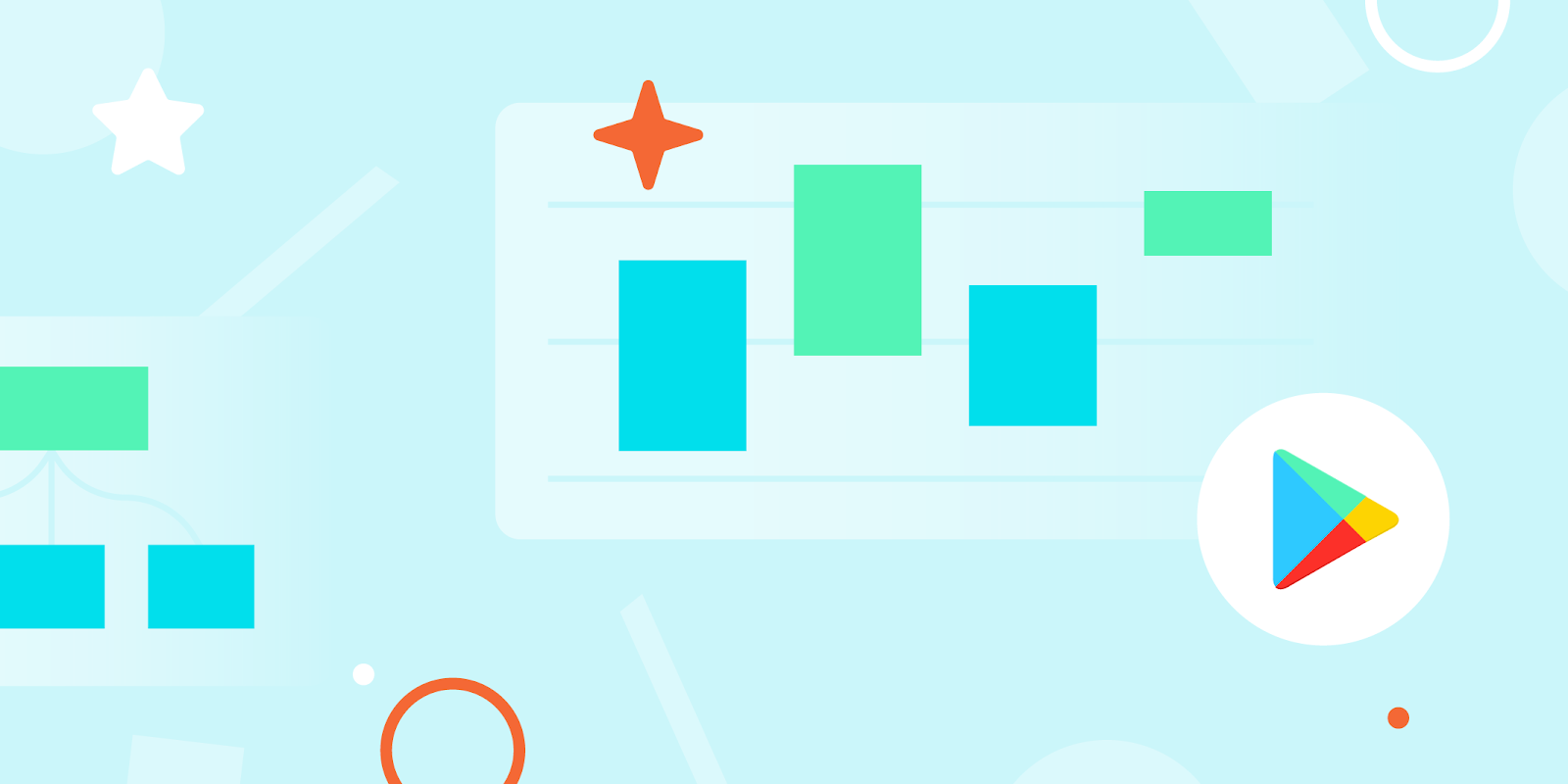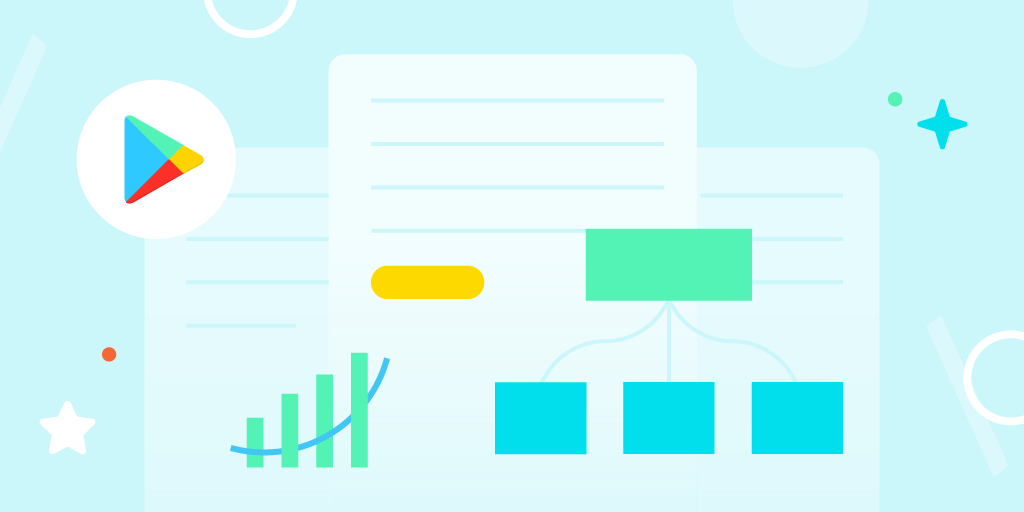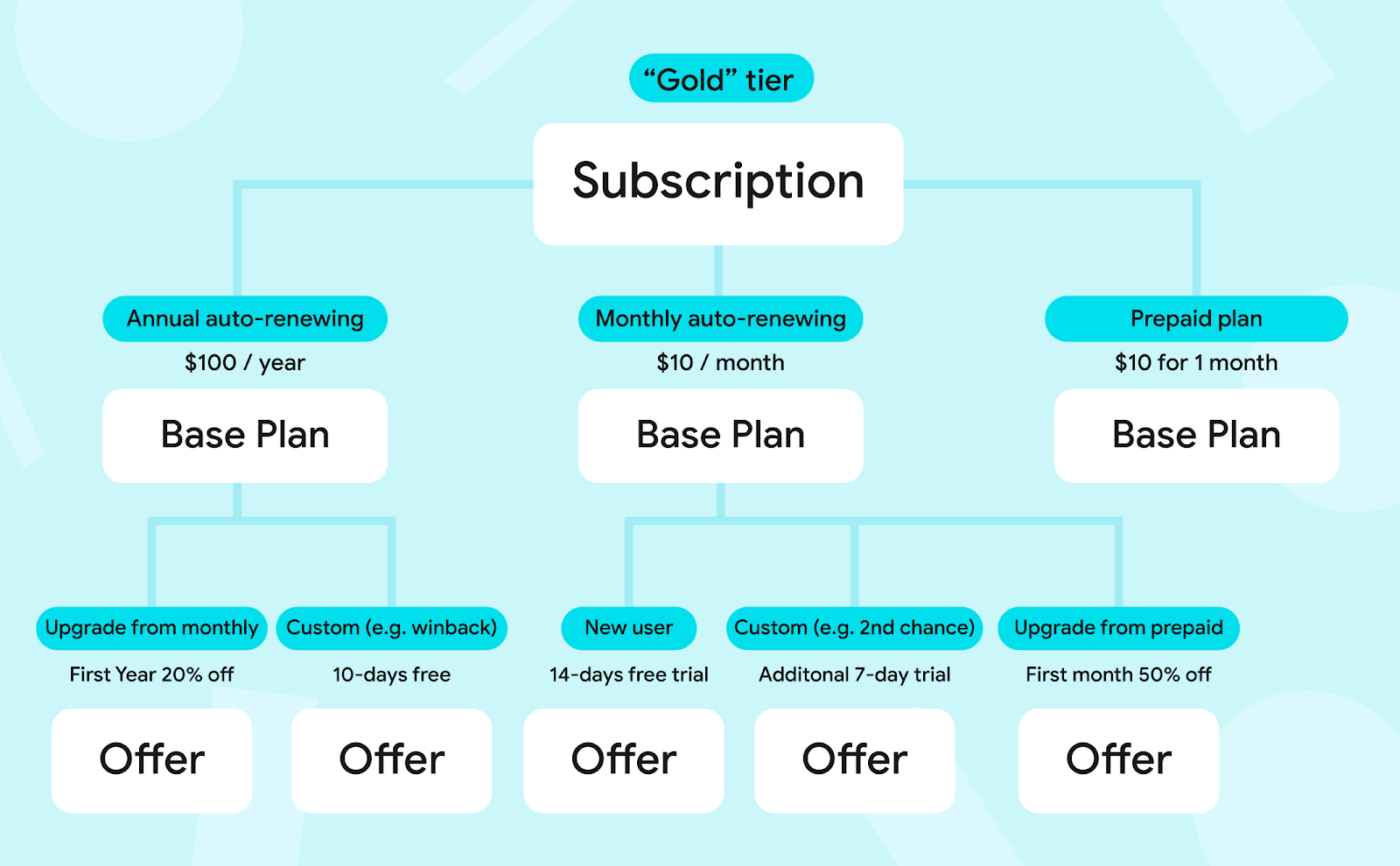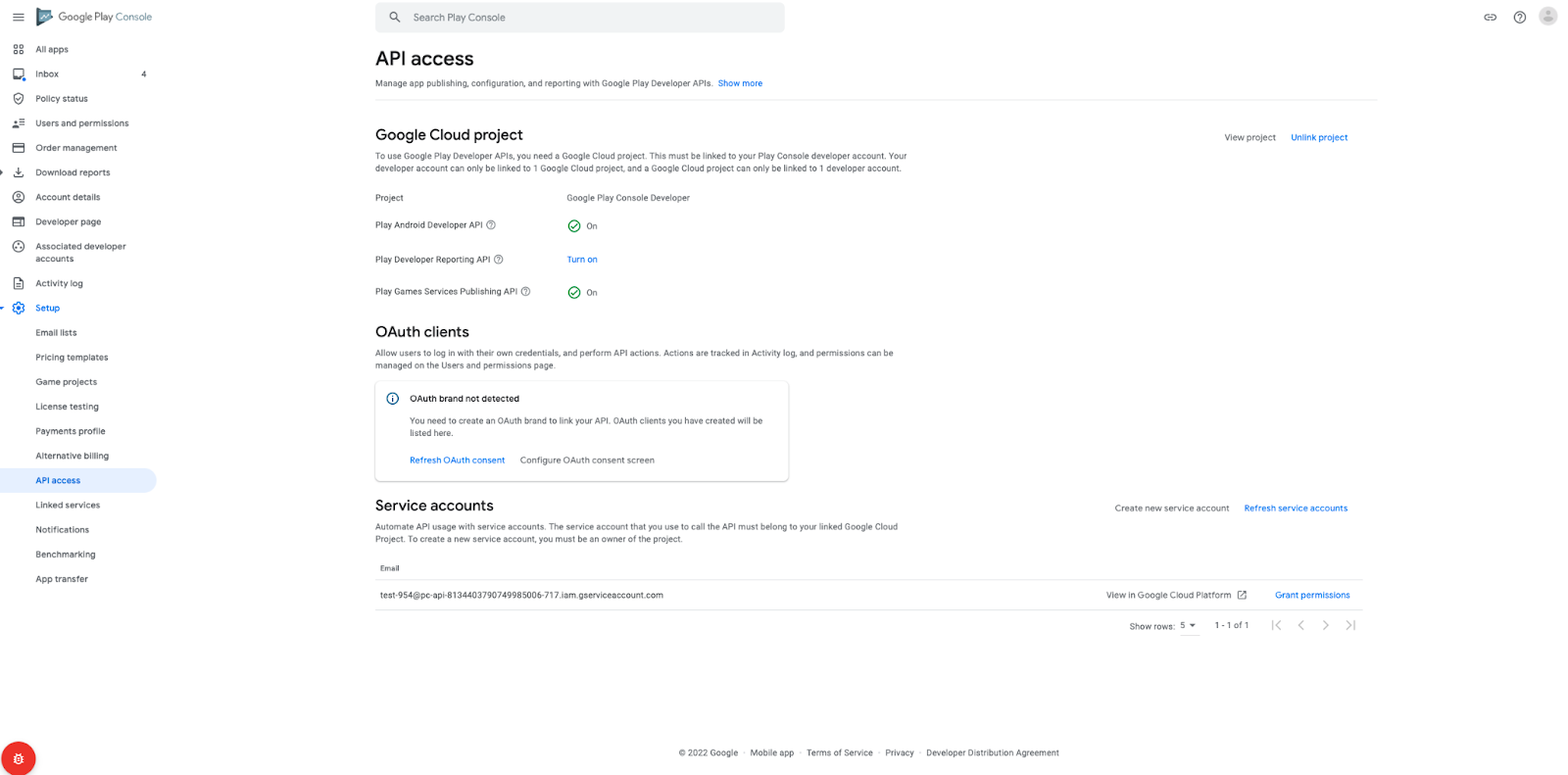Posted by Alex Musil, Product Management at Google Play

At this year’s Google I/O, we focused on three major ways we can help you continue growing your business on Google Play:
- Privacy and security initiatives to keep the ecosystem safe for users and developers, like the new Google Play SDK Index
- Tools to help you improve your app quality across the app lifecycle
- New ways to help you acquire users and engage with existing ones through features like LiveOps, as well as ways to drive revenue growth with new subscription capabilities
You can check out all the updates in our I/O session, or keep reading for a quick overview of the new features that will help take your business even further.
Privacy and security initiatives to protect developers and users
Over the last few years, we've been working on tools to help make SDKs better and safer for everyone, including SDK providers, app developers, and ultimately, our collective end users.
- In 2020, we launched Google Play SDK Console, which provides usage statistics, crash reporting, and the ability for SDK providers to communicate to app developers through Play Console and Android Studio. Today, we launched Google Play SDK Index, a new public portal that lists the most widely used commercial SDKs, and provides data and insights about each one.
The index includes over 100 SDKs with information about which app permissions they use, statistics on the apps that use them, and if the SDK provider is committed to ensuring that their SDK’s code follows Google Play policies. You can use it to inform your decisions about which SDKs and specific versions to use in your app.
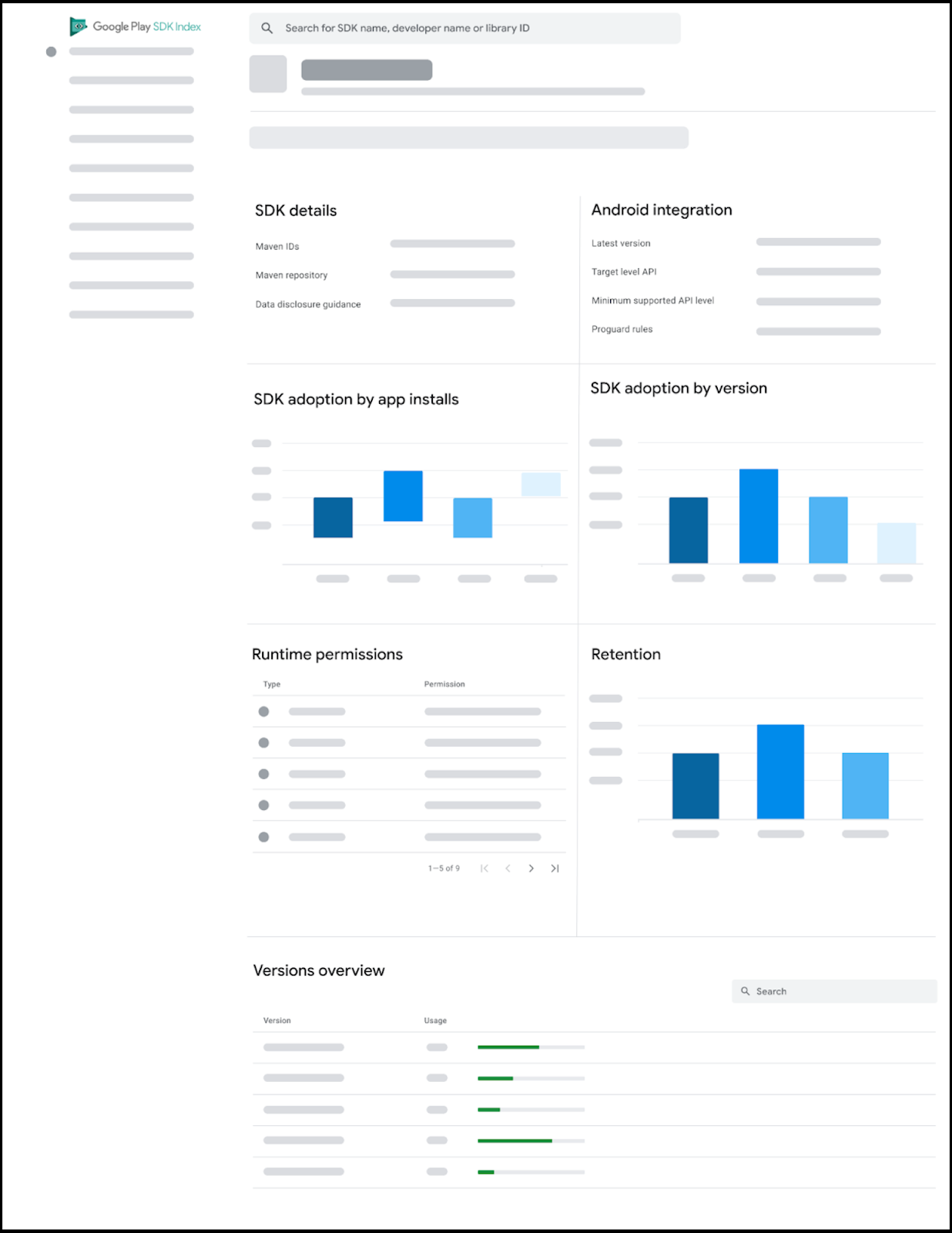
Google Play SDK Index shows reliability and safety signals so you can decide if an SDK is right for your business and your users.
- We’re also protecting the work you put into your apps with Play’s app integrity tools. Play App Signing is used to securely sign millions of apps on Google Play and helps ensure that app updates can be trusted. From now on, Play App Signing will use Google Cloud Key Management to protect signing keys. This means you can review public documentation including the storage specifications and security practices that Google uses to protect your keys. We’ll soon be using Cloud Key Management for all newly generated keys, followed by securely migrating eligible existing keys.
- Another new feature of Play App Signing rolling out soon is the ability for any app to perform an app signing key rotation. In the event of an incident or just as a security best practice, you’ll be able to trigger an annual key rotation from within Play Console. To maximize security, Google Play Protect will also verify your app updates using rotated keys for older Android releases that don’t support rotation, going all the way back to Android Nougat.
- We also offer an API that you can use to help protect your app, your IP, and your users from abuse and attacks. The new Play Integrity API is now available to all apps and games to detect fraudulent and risky interactions, such as traffic from modified or pirated app versions and rooted or compromised devices.
- In addition to protecting users, we also want them to feel safe when downloading apps and games from Google Play. The new Data safety section gives you a way to showcase your approach to privacy and security so that users can confidently download your app. If you haven't yet, please complete your Data safety form by July 20th. Check out our Help Center article for more information.
- In other data privacy news, we’ve released the first developer preview of the Privacy Sandbox on Android, our initiative to build new technologies that improve user privacy while still enabling effective advertising. Check out our blog post to learn more and join our email newsletter for the latest updates.
More features to help you improve app quality across your app lifecycle
Your app quality affects everything from your ability to engage and retain users to your discoverability and promotability on the Play Store.
- Android vitals is your definitive source of technical quality metrics on Play. Now, with the new Developer Reporting API, you can access Android vitals metrics and issues data outside of Play Console, including crash and ANR rates, counts, clusters, and stack traces and integrate them into your own tools and workflows.
- You can also now view Android vitals data at the country level to help you troubleshoot and prioritize by location.
- And we’ve made it easier to use Android vitals alongside Firebase Crashlytics by aligning issue names and enabling you to see Play Track information in Crashlytics when you link your Play app with your Crashlytics app.
Beyond Android vitals, there are other new features to help you across the development lifecycle:
- Reach and devices makes it easier to plan for better quality by providing insights on your user and issue distribution. It now includes revenue and revenue growth metrics for apps that monetize on Play, so you can build revenue-based business cases for quality and reach.
- We also overhauled the Device catalog to make it easier to understand and use. The Overview page now includes install data, and you can filter by new device attributes like shared libraries. You can also see device variants by RAM and Android version, which lets you quickly identify the most common variant.
- It is now much easier to test your app on different form factors. You can independently run internal and open testing on many form factors including Android Automotive, and soon, Wear OS.
- To help you keep users up to date, the In-app Updates API will now let your app users know if there’s an update available within 15 minutes instead of up to 24 hours, including showing your “What’s new” text within the update screen.
To learn more about all these launches, check out our session on app quality.
Marketing and monetization features to help you grow your business
Google Play can help grow your business with new ways to acquire new users, engage your existing ones, and drive revenue growth.
- Your store listing is often the first thing a prospective user sees about your app. To help you make the right first impression, you can now make up to 50 custom store listings, each with analytics and unique deep links, so you can show different listings to users depending on where they come from.
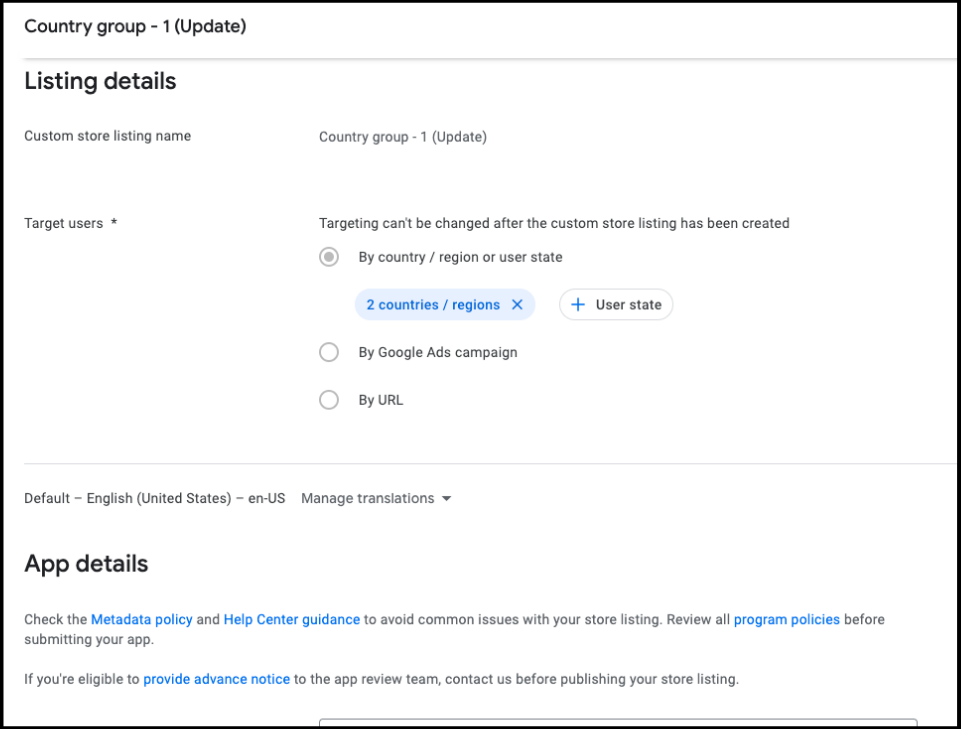
Developers can now create up to 50 custom store listings, each with analytics and unique deep links.
- We’ve also made some major improvements to Store Listing Experiments. You’ll now see results more quickly for most experiments, with more transparency and contrul to help you anticipate how long each experiment is likely to need.
- Deep links are an important tool when trying to improve engagement with your in-app content, so we’re making it easier to keep your deep link setup complete and up-to-date. Soon, we’re launching a new Play Console page dedicated to deep links with all the information and tools related to your app’s deep links in one convenient place.
- Another helpful tool is LiveOps, a feature that allows you to submit content to be considered for featuring on the Play Store. By surfacing limited-time offers, events, and major updates for your app or game, LiveOps drives 5% more 28-day active users and 4% higher revenue for developers using the feature than those that do not. If you’d like to join our beta program, you can learn more and express your interest here.
- Since last year, we’ve made some big changes to Play Commerce to help you do business with users with regional payment method preferences, such as cash and prepaid. We’ve expanded our payment method library to include over 300 local payment methods in 70 countries, and added eWallet payment methods such as MerPay in Japan, KCP in Korea, and Mercado Pago in Mexico.
- We also expanded pricing options with ultra-low price points to help you increase conversions and grow your revenue. Now you can price your products as low as the equivalent of 5 US cents in any market. This will allow you to adjust your prices to better reflect local purchasing power, run locally relevant sales and promotions, and support micro-transactions such as tipping.
- We launched new subscription capabilities along with a reimagined developer experience, making it easier to sell subscriptions on Google Play. For each subscription, you can now configure multiple base plans and offers. This allows you to sell the subscription in multiple ways and reduces operational costs by removing the need to create and manage an ever-increasing number of SKUs.
Each base plan in a subscription defines a different billing period and renewal type - e.g a monthly auto-renewing plan, an annual auto-renewing plan, and a 1-month prepaid plan. A base plan can have multiple offers supporting different stages of the subscription lifecycle - e.g. an acquisition offer for limited time free trial, or an upgrade offer to incentivize subscribers to move from a prepaid plan to an auto-renewing plan. Offers are a great way to acquire new subscribers, incentivize upgrades, and retain existing subscribers.
![Easily configure your subscription base plans and offers without having to create additional SKUs. [previous configuration (left); new configuration (right)]](https://blogger.googleusercontent.com/img/b/R29vZ2xl/AVvXsEh2RBhMUNly_JKFCQjmPsudneSHVbjG9_FM2L3fca4q1fcT9E8oTkAESwaoo-3stYYKqbSUSwajnKs1wuOCfeLsB4xkSjQVhEGOO38IgBtd0sKJZqUumJv_zVwnrxpIi8DnU3nZ3UE7_HfhcZsAnPJ7tAfnklcldcQZcCOFu194vEWYcesA1KxQwCf9/s1600/Play-new-ways-to-sell-subscriptions-inline-V3.png)
For each subscription, you can now configure multiple base plans and offers.
- New prepaid plans allow you to offer users access for a fixed amount of time. Users can easily extend their access period at any time before plan expiration. Users can purchase these top-ups in your app, or right on the Play Store subscription screen. They make a great option for regions where pay-as-you go is standard.
- In-App Messaging is a new way to prevent you from losing subscribers due to a declined payment. Simply use the In-App Messaging API to check with Play when a user opens the app. If the user’s payment has been declined, a message will remind them to update their payment information.

Prevent subscriber loss due to declined payments with the In-App Messaging API.
These features are all available with the latest version of Play Billing Library 5.0. To learn more about these and other tools to help grow your business, check out “Power your Success with new acquisition, engagement and monetization tools.”
Thank you for continuing to be a part of the thriving Google Play ecosystem. We can’t wait to see what you build next.
How useful did you find this blog post?
★ ★ ★ ★ ★Source: Android Developers Blog
